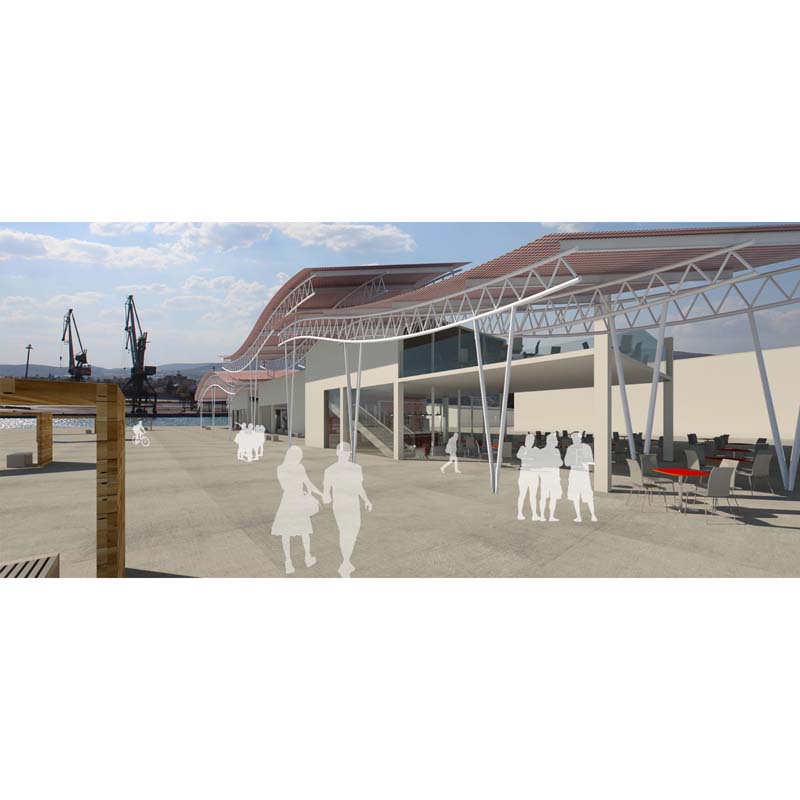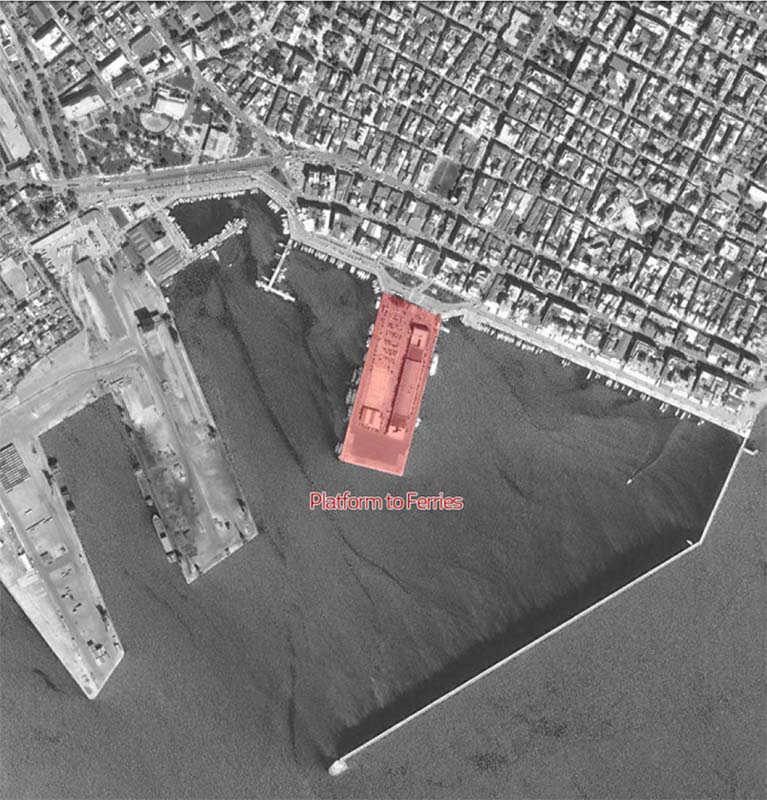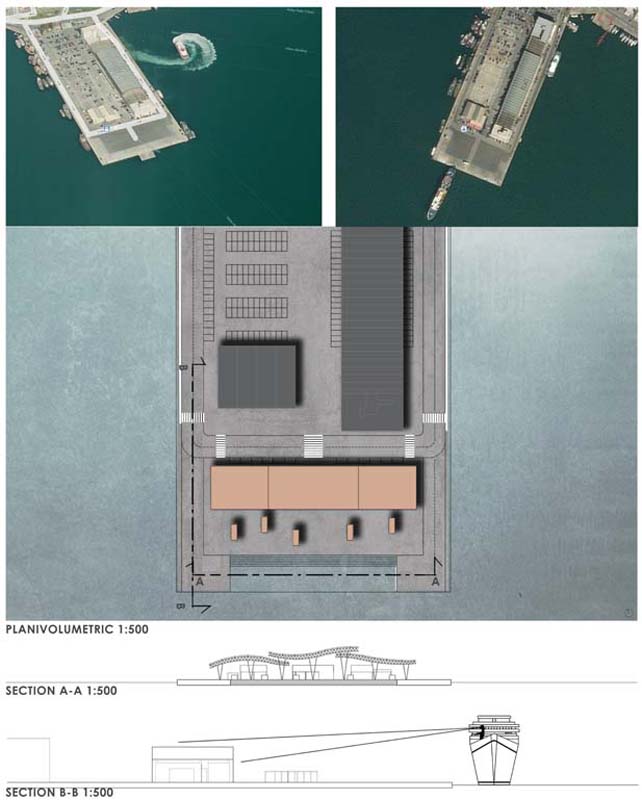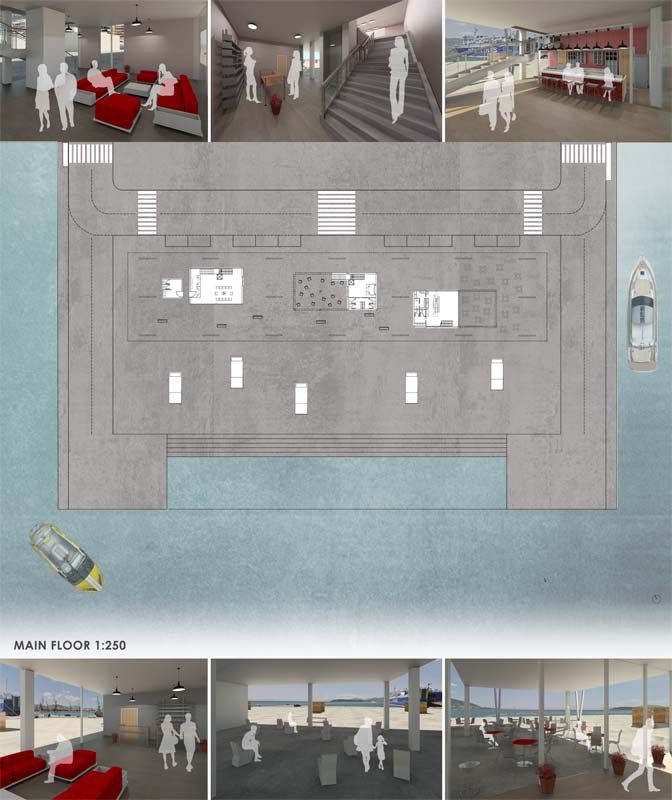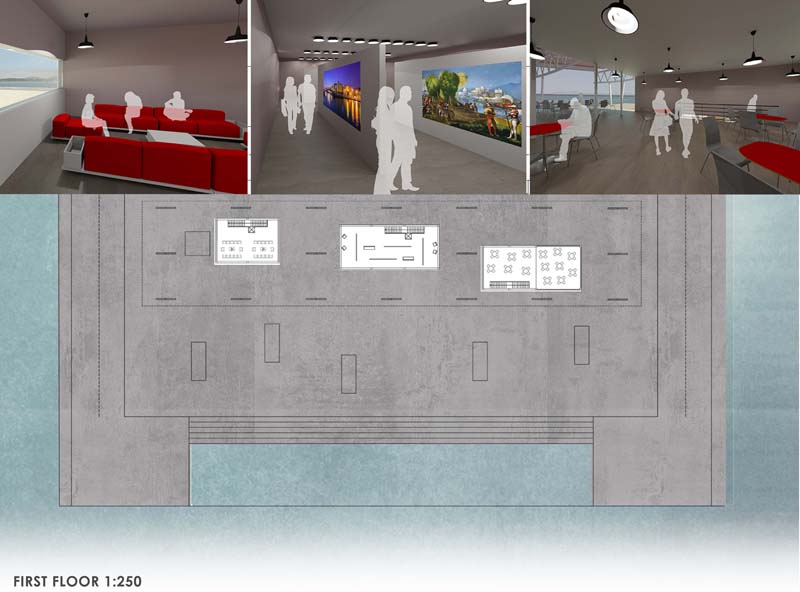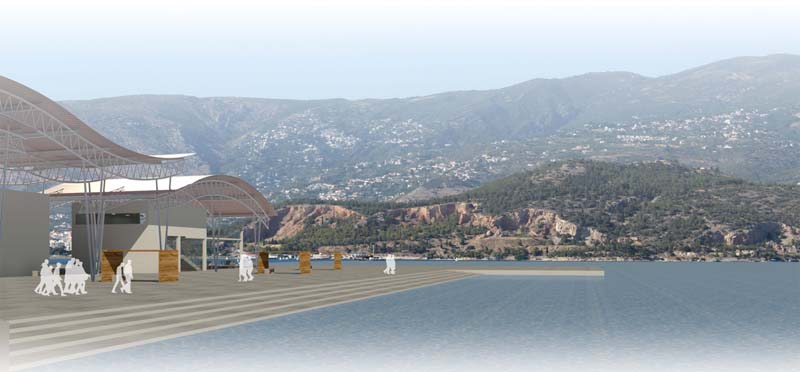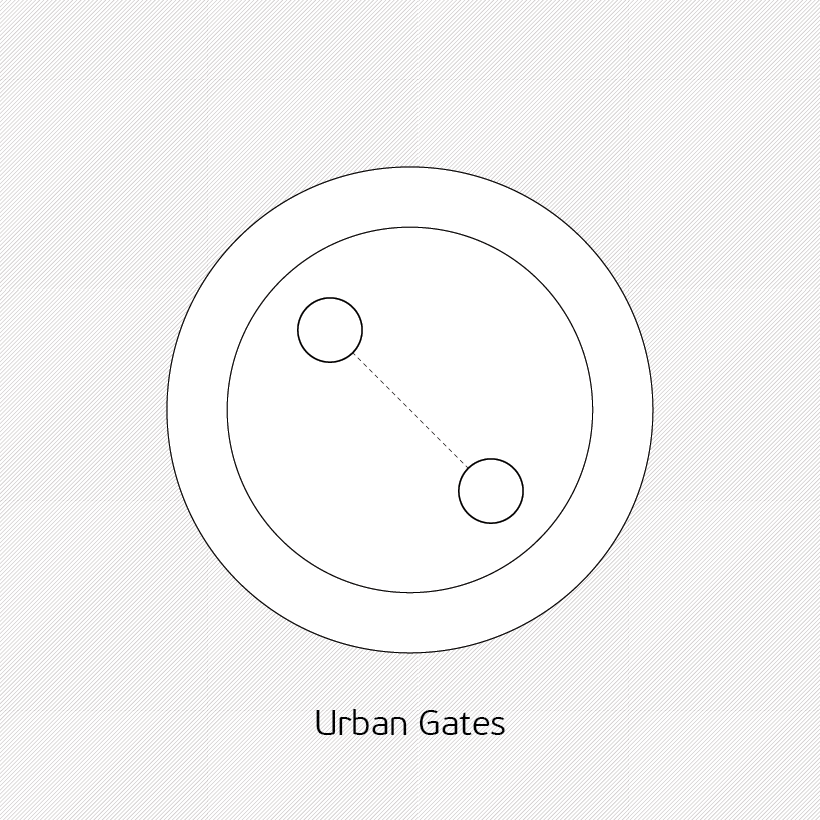

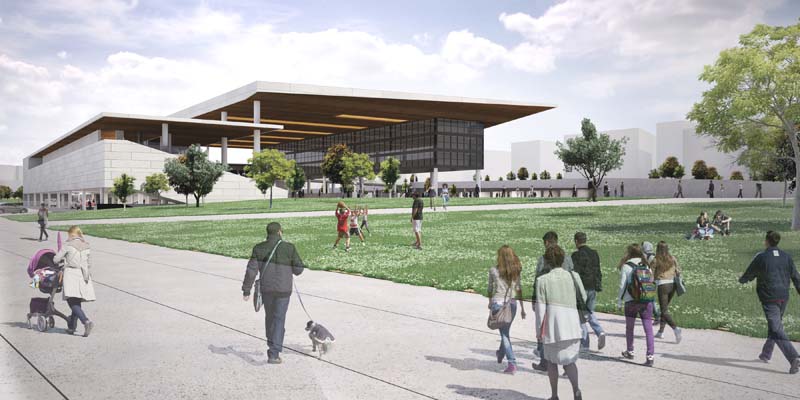



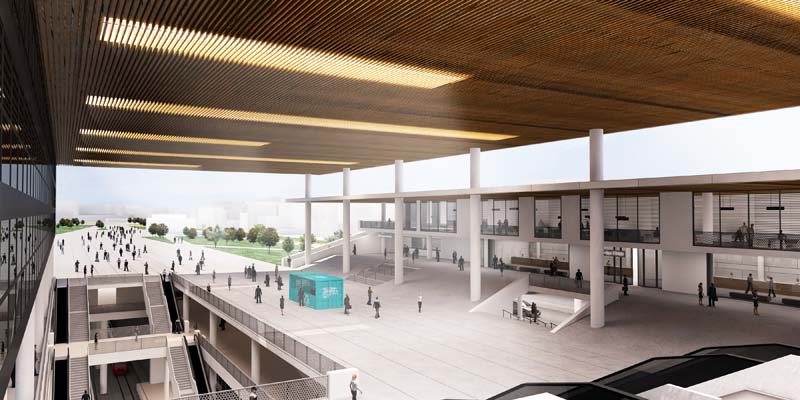

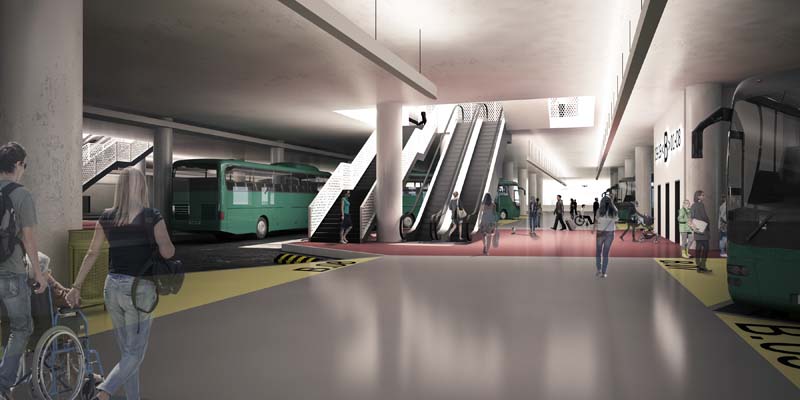

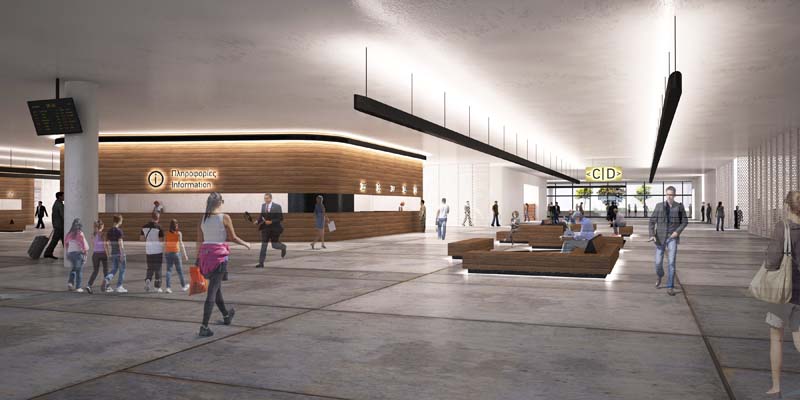

Overland transport networks always comprised the main design axis. According to Marc Augé, “big cities are defined firstly by their capacity to import and export people, products, images and messages”. The design and character of the overland nodes forms in its turn the character of the city itself and comprises one of its most recognisable landmarks. The optimisation of the communication of the connection between the different nodes is a key element, in order to form a continuous network consisting of various transportation types.
The current thesis project negotiates the fabrication of a new urban node supporting the suburban overland transport types, particularly the railway and busses.
Currently, the established node consists of a disjointed system of three different buildings, the two buildings of suburban busses (KTEL) (Liosion Avenue, Kifisou Avenue) and the building of Larisis Station (trains). The present infrastructure cannot be recognised as an urban node while being part of an interconnected system of smaller nodes because any communication between them is non-existing. Additionally the existing sub-nodes do not relate operationally with the city, resulting to the creation of remote units inside the urban fabric.
The proposal is the fabrication of a new overland transportation node, which will underline its role as an urban gate, transcending its use as a node becoming a new urban space. Translating the existing character and quality of the urban fabric. This new node redesigned based on the contemporary needs and building technology aims to satisfy overloaded and complicated functional demand while hosting several urban acts. The proposal is a result of the surrounding environment, re-appropriating and re-designing urban public spaces incorporating them in the city as its extention.
Supervisor: Kotionis Zissis
Reference Number: 701
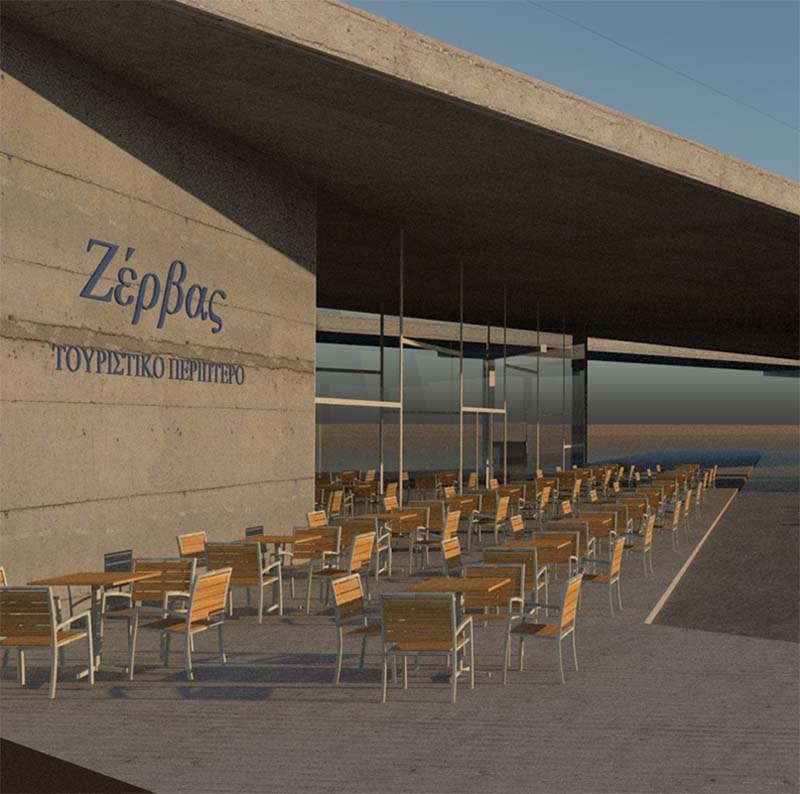

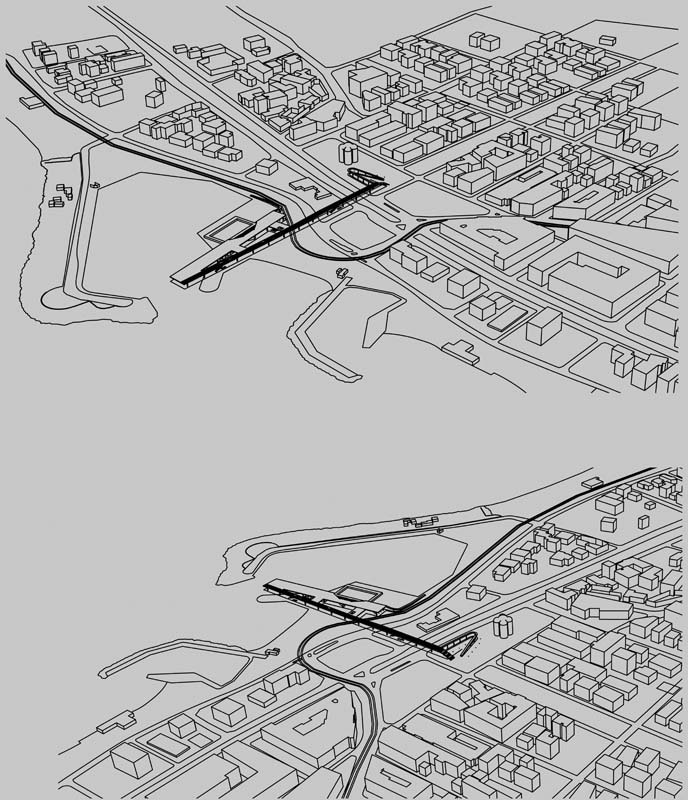

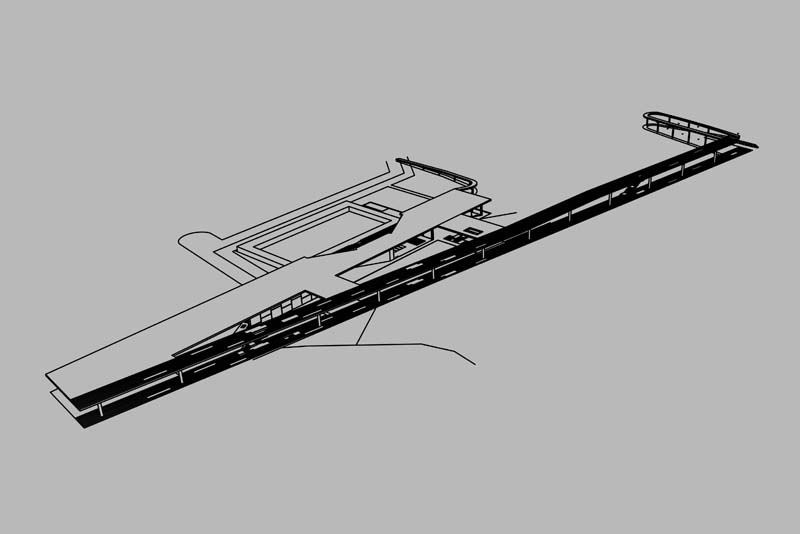

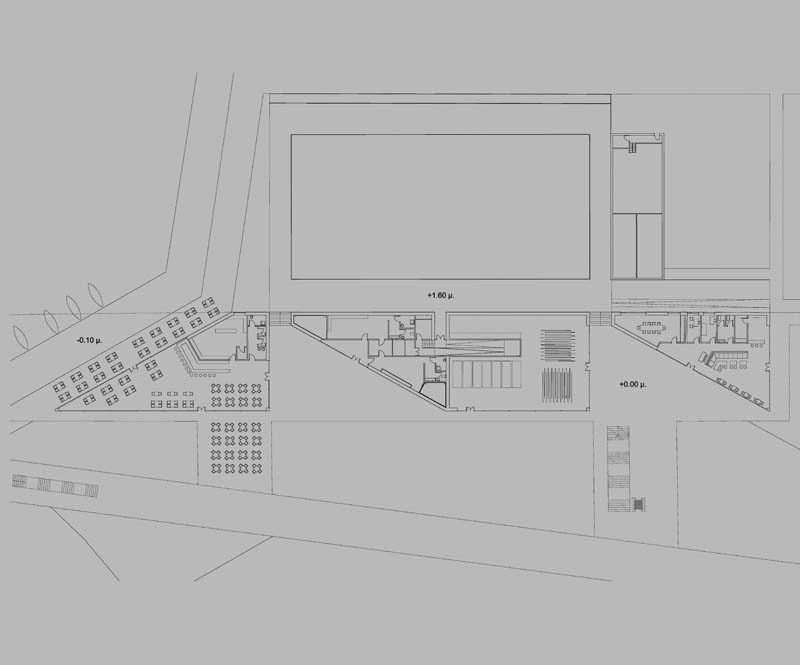

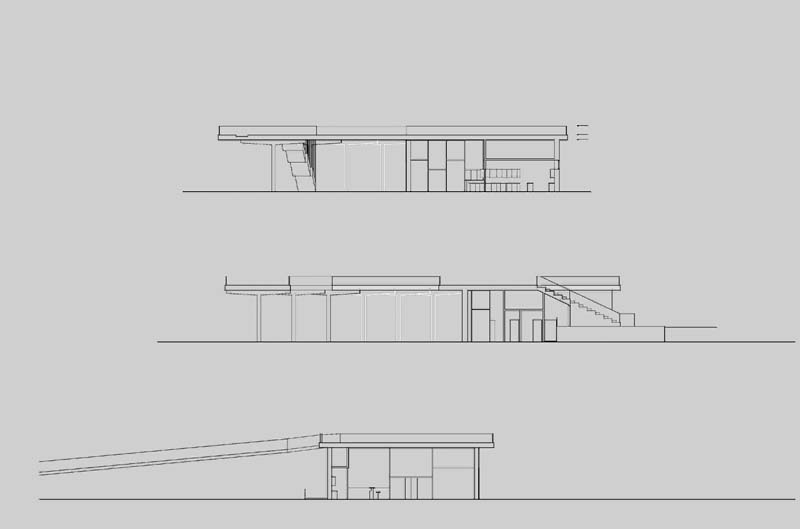

The Athenian coastline and the management of its individual parts is a subject of public thought today more than ever. The common ground of the different parts is their functional isolation from the inland which is mainly due to the passage of Avenue Poseidonos.
In this context, the project focuses on the area of Glyfada, and aims to repair the damage in the urban fabric caused by the Avenue through the study of ways in which a re-connection between the city and the shore could be achieved.
The thesis titled “[A] node: Coastal activities and transitions in the area of Glyfada” focuses on the creation of a central node of movements and activities. This node receives pedestrian and bicycle flows concentrated in the inland of the area and diffuses them on the beach and vice versa while at the same time activates and redefines the spatial relationships of coastal activities taking place at the point of connection.
It is a proposal for urban intervention, which concerns the coastal front of the area, with its main axis of vertical relationship with the inland of Glyfada and more broadly with its horizontal connection with all the individual pockets that develop on the coastline of Athens. The objectives of the project are the functional link of the beach with the rest of the area and the development of community activities within the local community and the planning of mild tourist activity in order to stimulate the local economy.
Supervisor: Paniyiris Costis
Reference Number: 702


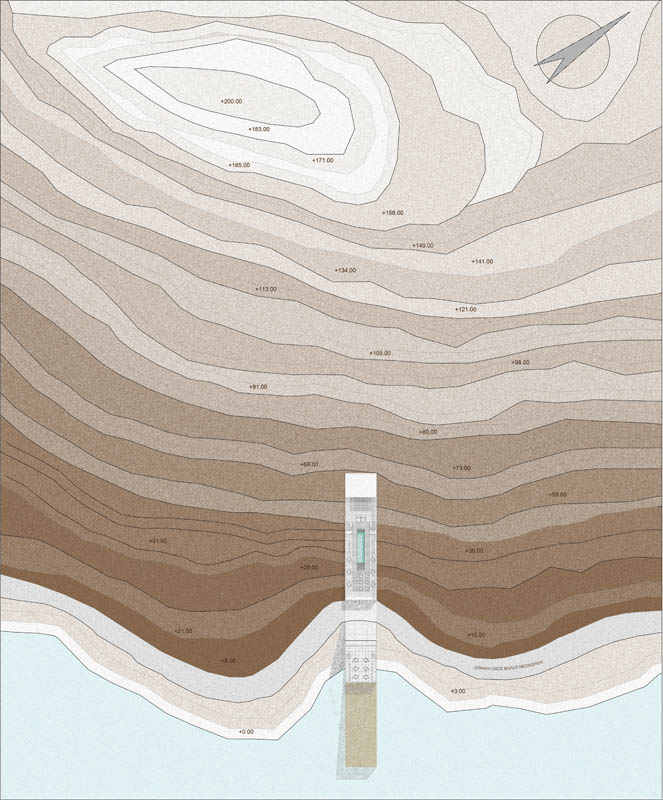

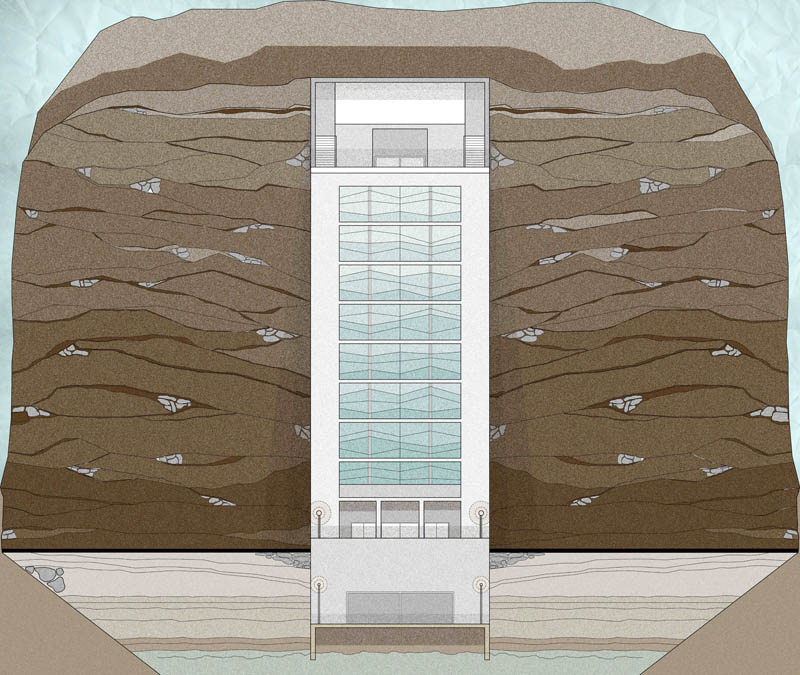

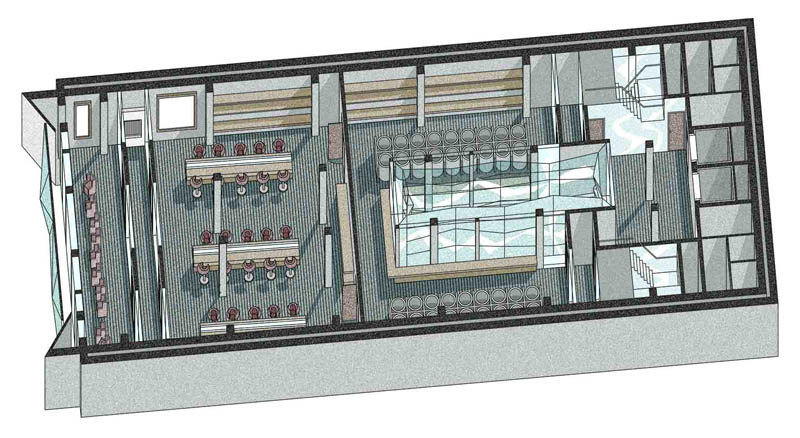

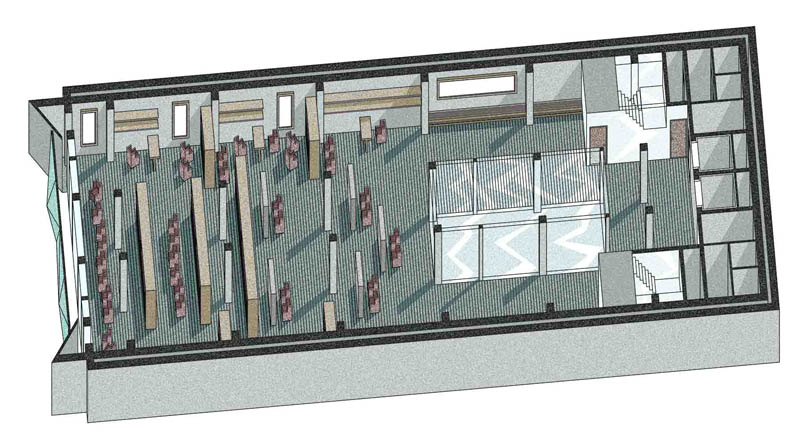

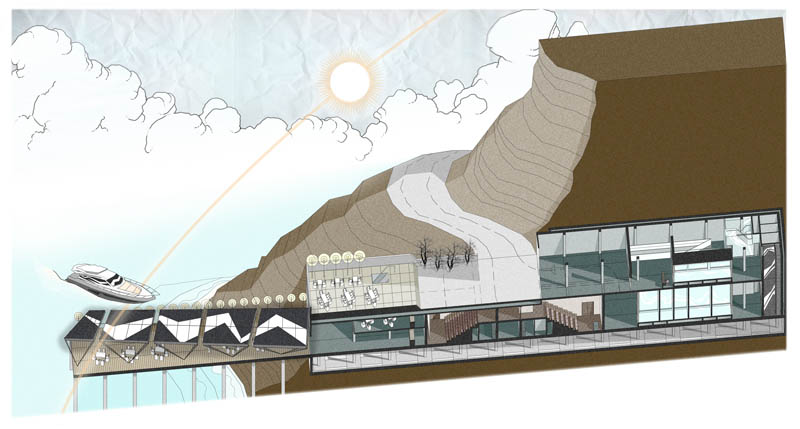

Following the issues of our academic and artistic interests, we present our theoretical and practical proposal for a structure completely “submerged” into the hill of Goritsa, which is fully synchronized with the physical and technical environment of the site. This research laboratory, specialized in marine biodiversity, consists a landmark that is hidden in the ground, in order to be protected from the weather and also follows the instructions of European Union in the field of sustainable buildings, like the “gathering” of Aeolic and Solar Energy.
We suggest the construction of six floor height patio, in the center of our building in order to achieve natural illumination. We design a second vertical “route”, from the sea to our main structure.
We create large aquariums for the marine species we want to protect, study, observe and display. This structure includes in its design “solutions”, the required and important spaces for research, in order to provide training to the fishermen, but also to the students of the Department of Ichthyology & Aquatic Environment of Thessaly. Our strategy to solve our concerns around social and scientific obligations, lead us to create multiple spaces for research, education, study and temporary stay. We believe that the process of academic and scientific research, from the conservative education methods to multiple media presentations, must be dominant public features for the city of Volos. This should happen as well, to each and every city, which pursue to act politically and technically to the worldwide conversation of “content”, under the principle of meeting, gathering and synchronizing the local with the global.
Supervisor: Stylidis Iordanis
Reference Number: 679
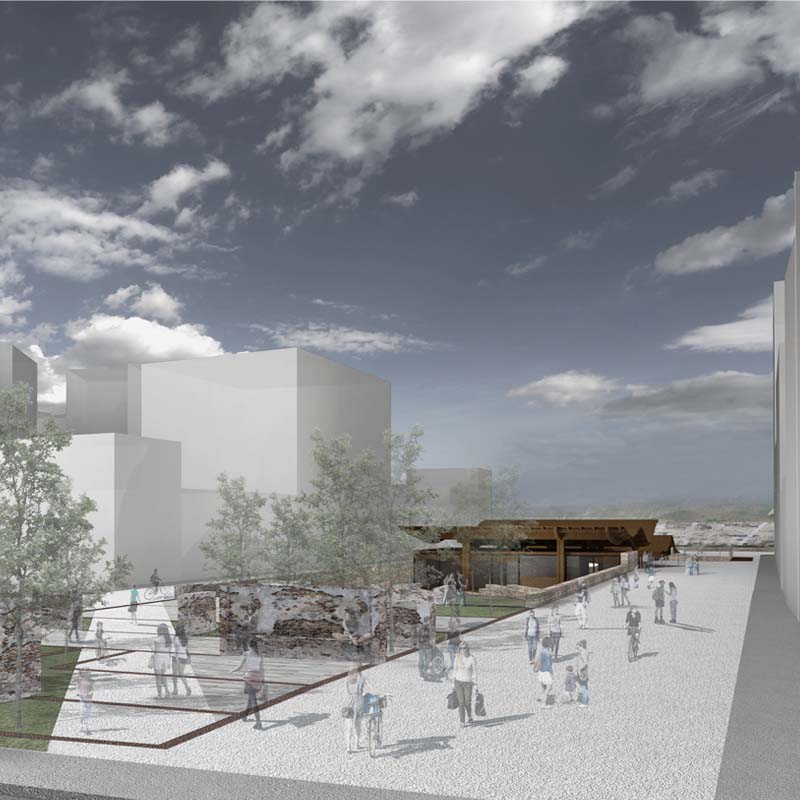

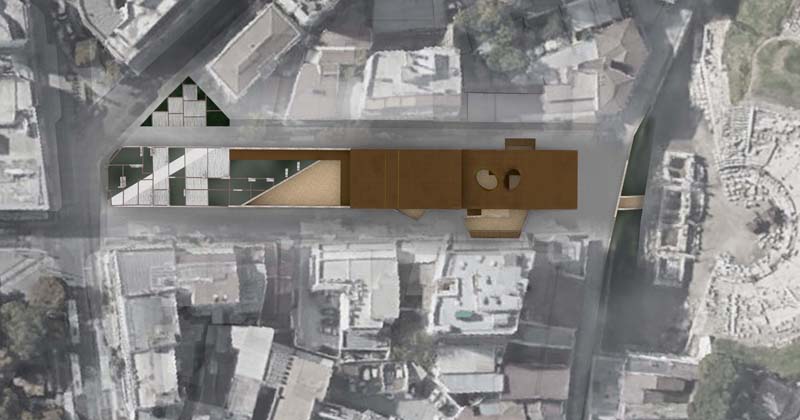

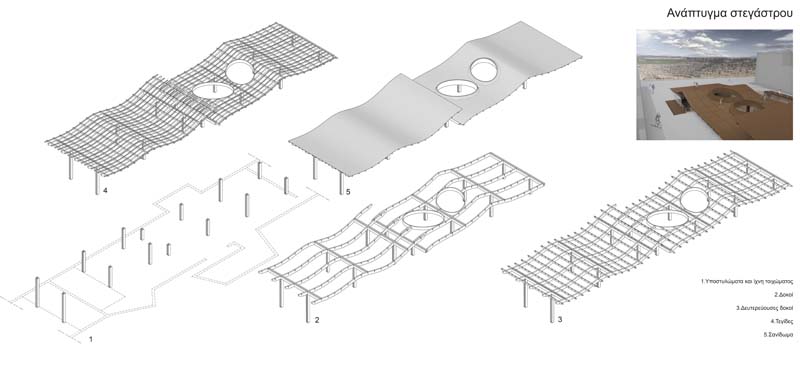

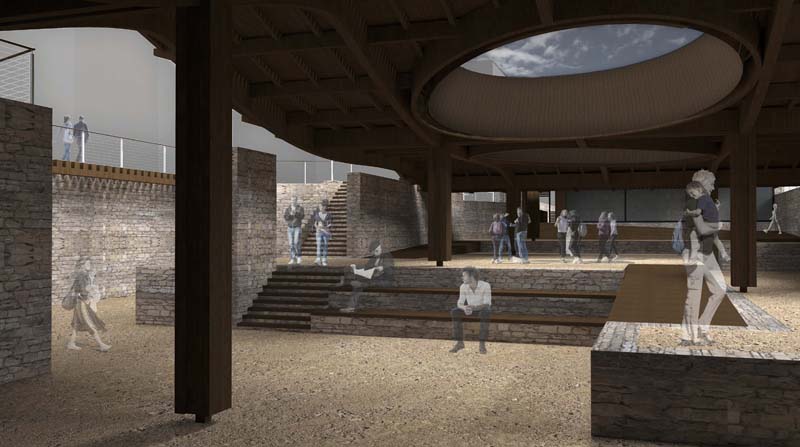



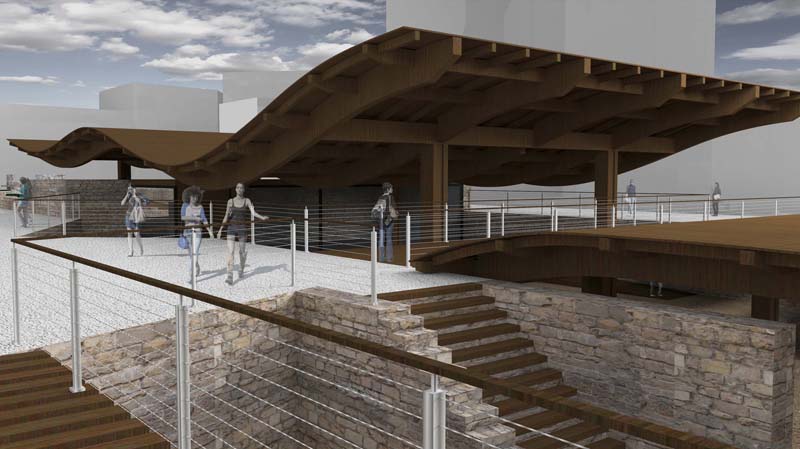

Having as a starting point the Ancient Theatre at the center of the urban space of Larissa and the need of transforming it to the symbol of the city, we study the building data of the area and propose urban regeneration of a part of the environment of the Theatre while creating historical paths that will end to it by height levels and will also contribute to its emergence. Through these routes, the traces of the different over the centuries times of the city are projected, thus achieving closer contact, appropriation and awareness of the history of the city by the residents of Larissa. Our design proposal comes as a sequence of actions by the Municipality of Larissa aiming at the demolition of the plot defined by Venizelou - Apollonos - Papanastasiou streets, in a wider effort to strengthen the role of the Ancient Theatre in the everyday city life. Our design proposal could not ignore the historical-archaeological side of the Theatre but also its position into the heart of the city inside the constructed area. On the one side, the proposed result should come into direct interaction with the neighbour Theatre but also should contain all the social and anthropocentric elements of the general area , inside of which it will be placed with the intention to get harmonically adjusted.
Supervisor: Trova Vasso
Reference Number: 663
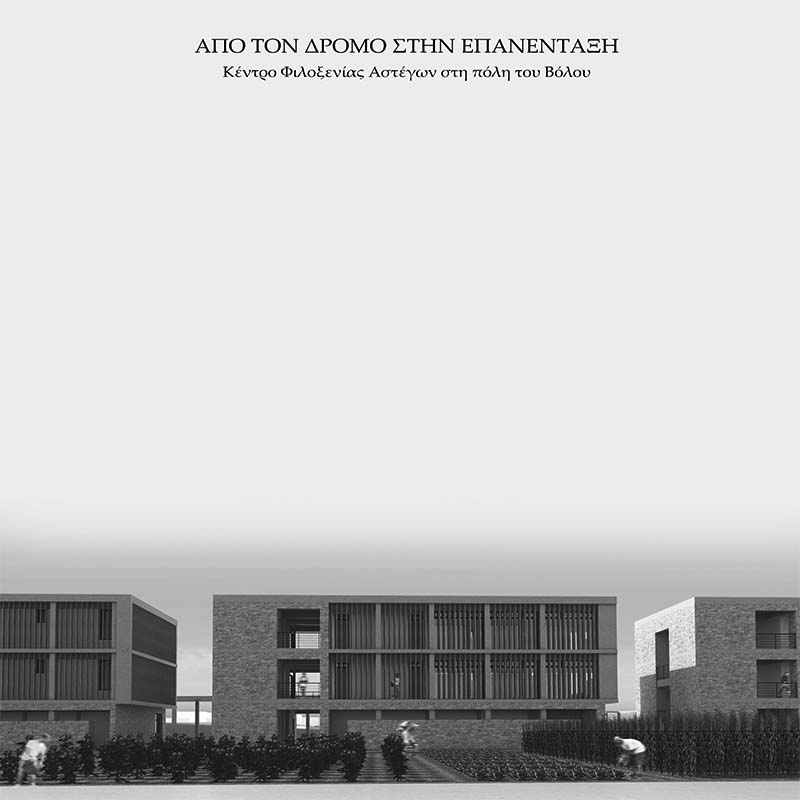

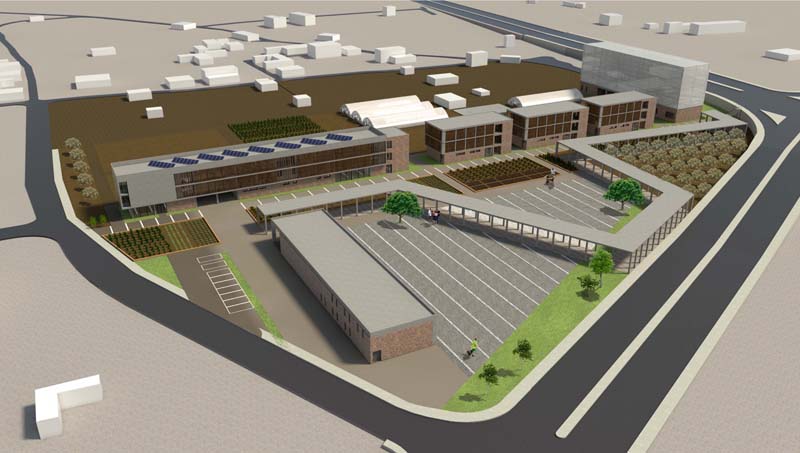

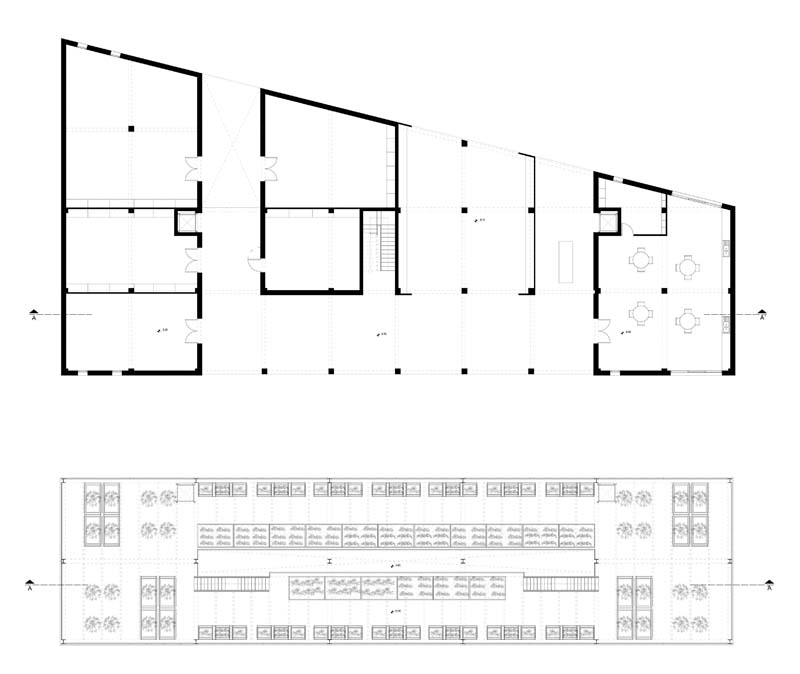

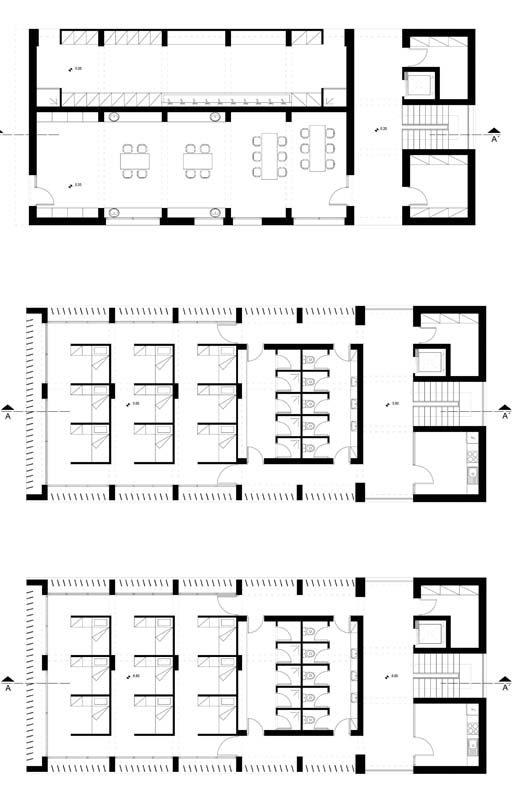

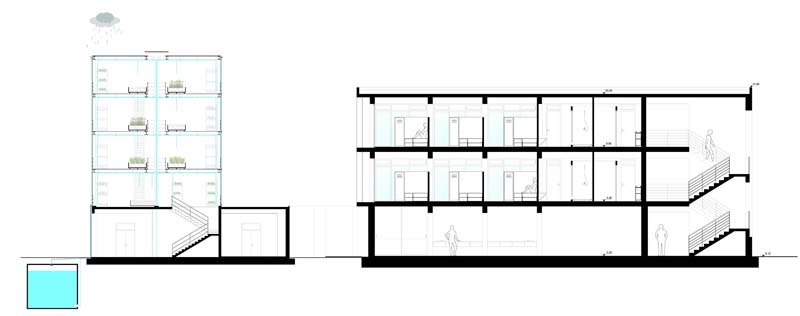

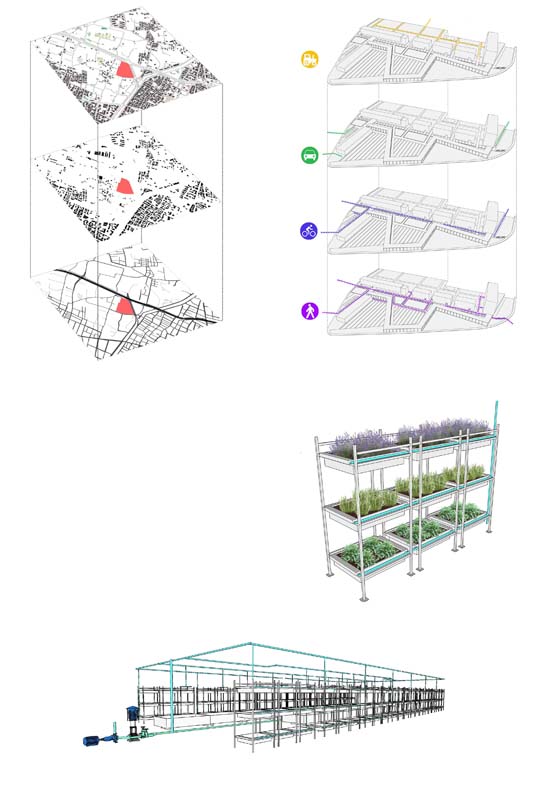

The diploma thesis focuses on the temporary housing of the homeless people of Volos and their parallel activation and support in order to reintegrate as active and independent citizens in society. The program also includes urban agriculture in order to attract the guests.
All the buildings that exist for homeless people are funded by the Municipality of Volos and the Church, the buildings that currently occupy these structures are no more than apartments with limited facilities and possibilities that are temporarily rented for these purposes and two hostels in the city of Volos which face space problems in relation to the number of homeless people in the city.
This observation was also the main reason for choosing this subject. The research is focused on the study and design of a center that gathers the necessary structures and houses them in a single space in order to function more efficiently and not to have a temporary character. The site was chosen based on a number of reasons. An empty plot of land was needed in the city of Volos, with enough space for the development of the program and offering easy access to the city and to public transport, without disturbing the cohesion of the local community. On the basis of the above, the plot was selected on the streets of Mitropolit Ioakim and Regional Volos in an area of intense agriculture character and sparsely populated.
The building program for the center includes both structures for housing and homelessness, about 50 in number, as well as facilities for their support and activation aiming to autonomy and reintegration into society. The separation of functions is done in six separate buildings, the first being a dining area, the second one having a social character, three sleeping rooms divided into men, women and families, and the latter have places for their activation in the agricultural sector. The guests of the center will work on the verbs of the program, which will grow vegetables, fruits and herbs and will be able to sell them on the street market that will be set up in the square of the complex.
Supervisor: Manolidis Kostas
Reference Number: 689
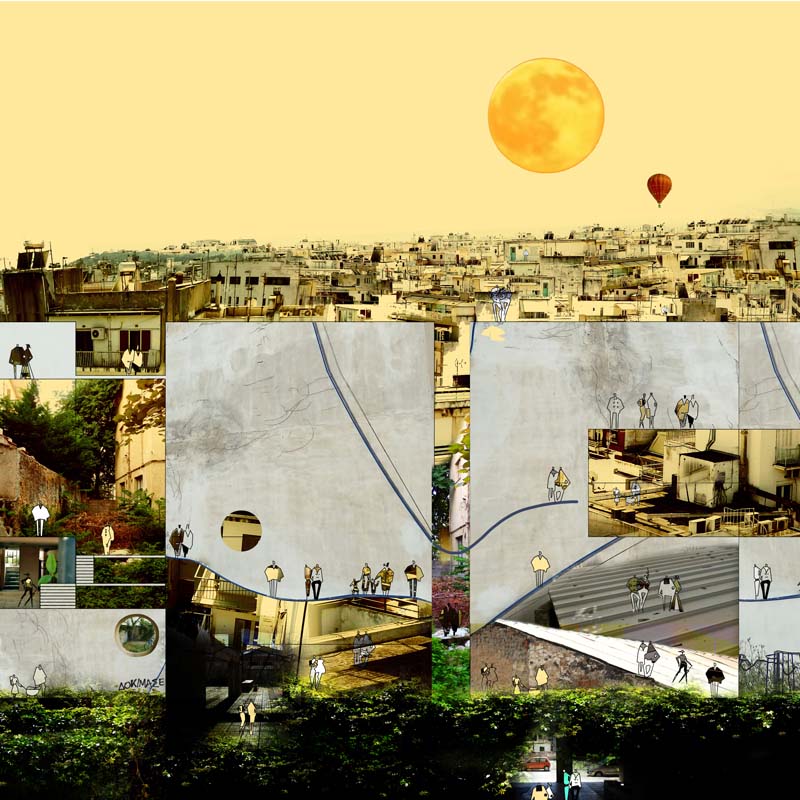

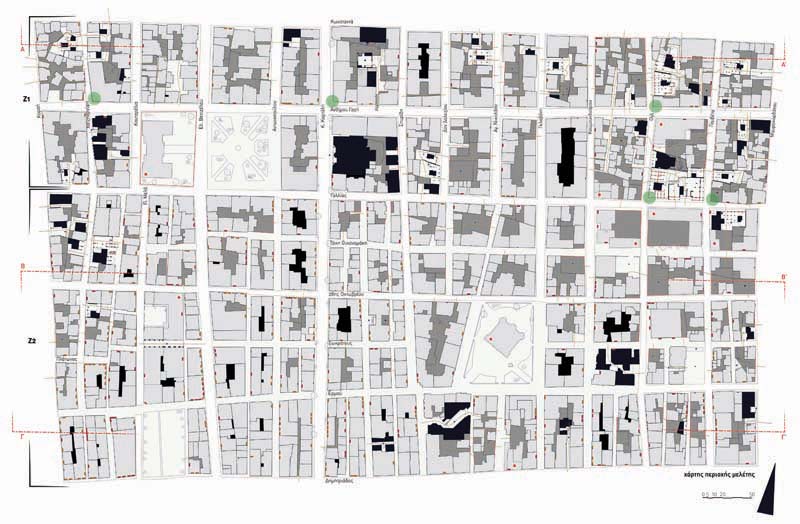

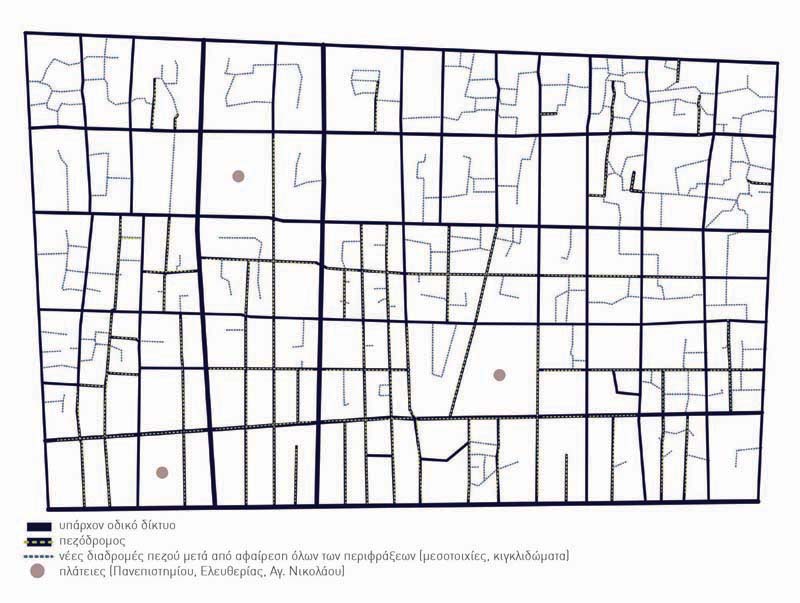

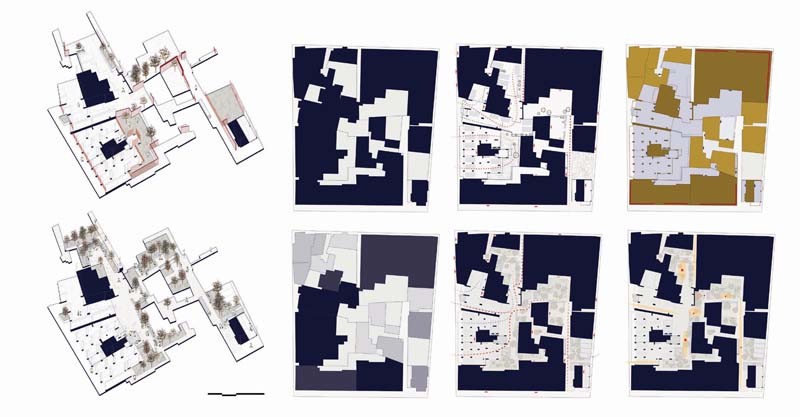

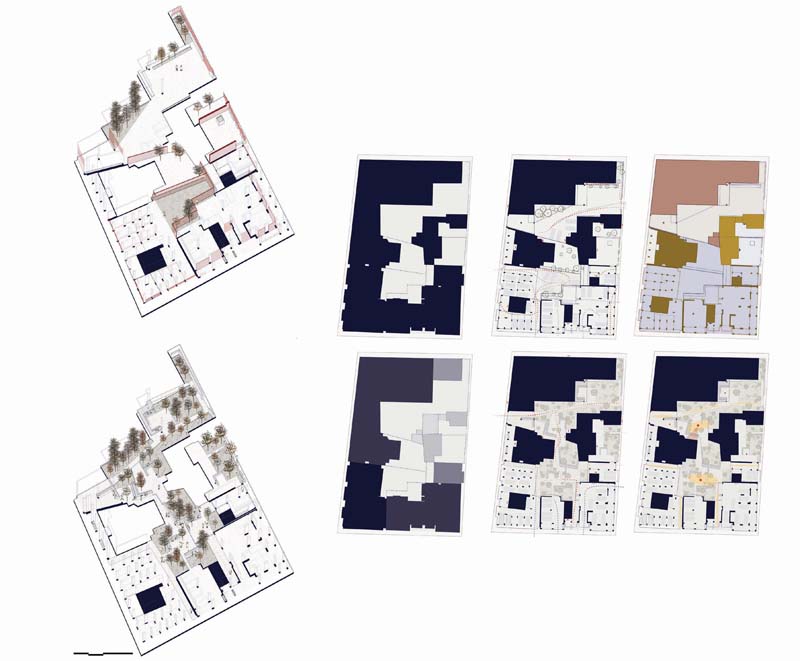



Our thesis is an attempt to widen the road and thus the public space, which is gradually shrinking, due to the boundaries imposed by the ownership regime and the increasing concern for the circulation of vehicles. As a field of study and analysis is selected a part of the commercial and historical center of Volos, which features urban elements such as high concentration of population, high and dense construction, mixed land use and intense traffic.
The focus of our attention is the pedestrian and his movement in the streets, which is enriched through the creation of free access spaces without involving them in speculation and commercialization.
To achieve this, we take advantage of the existing configuration of the unstructured areas of the city that we unify them, composing a network of small passes and small squares. Ownership limits are modified to allow the access and pass-through the city blocks, while provide opportunities to rest and new routes to walk around. The pedestrian "pierces" the solid blocks through empty spaces, parking or open ground spaces (pilotis). The "cracks" that are created make up a maze for wandering and opportunities of random encounters, behind the strong coastal front.
The network mainly targets inhabitants of the blocks as it is made up of private land. The unification of these spaces requires the acceptance of the inhabitants. The Municipality in cooperation with the local authorities, should organize a participatory planning workshop in which the inhabitants will have a decisive role, in order to start this process.
Supervisor: Lykourioti Iris
Reference Number: 719
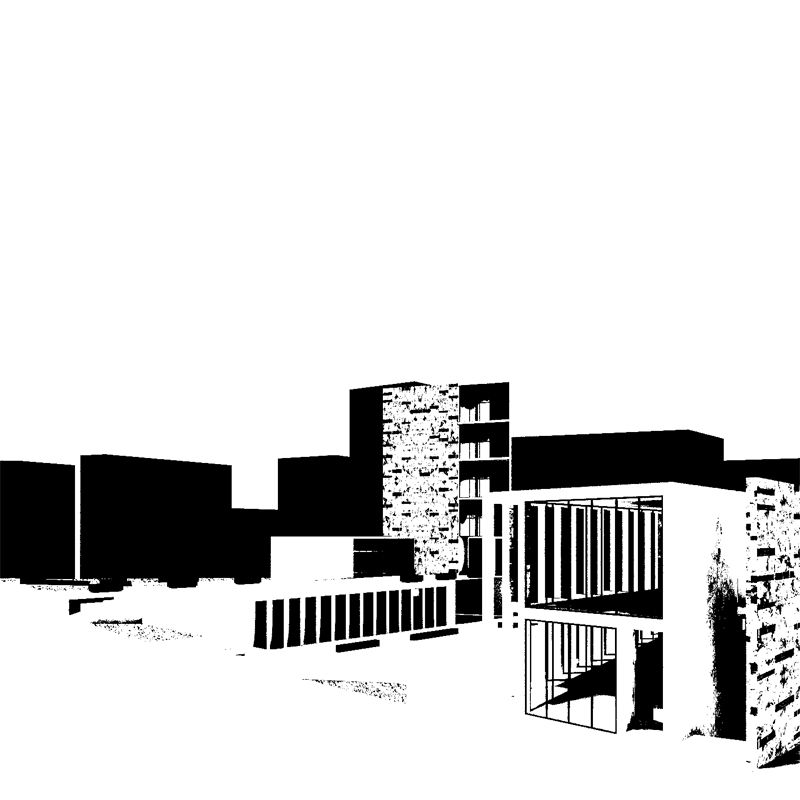

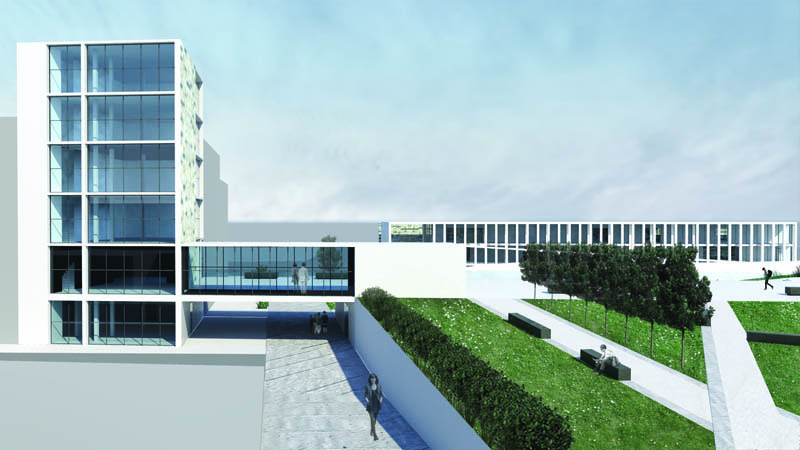

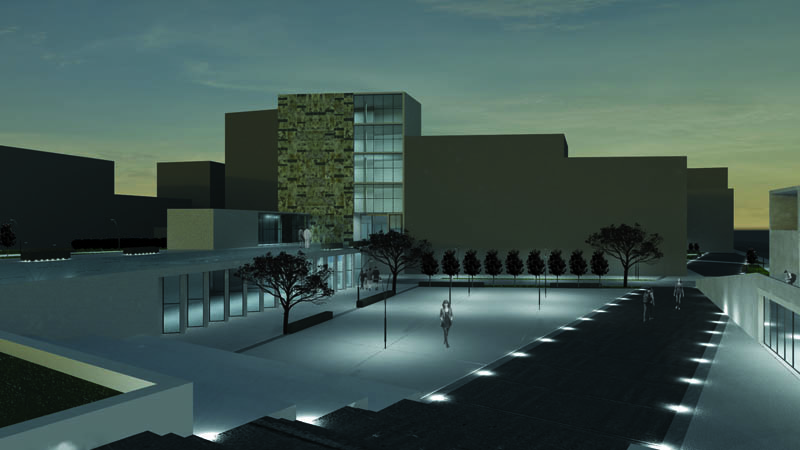

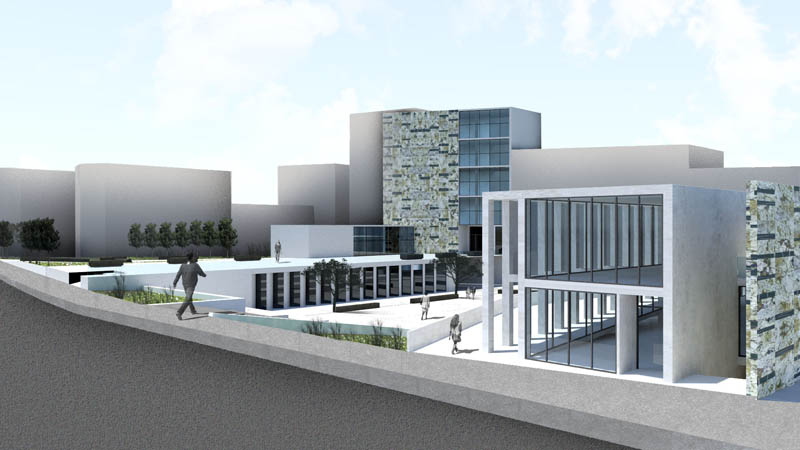

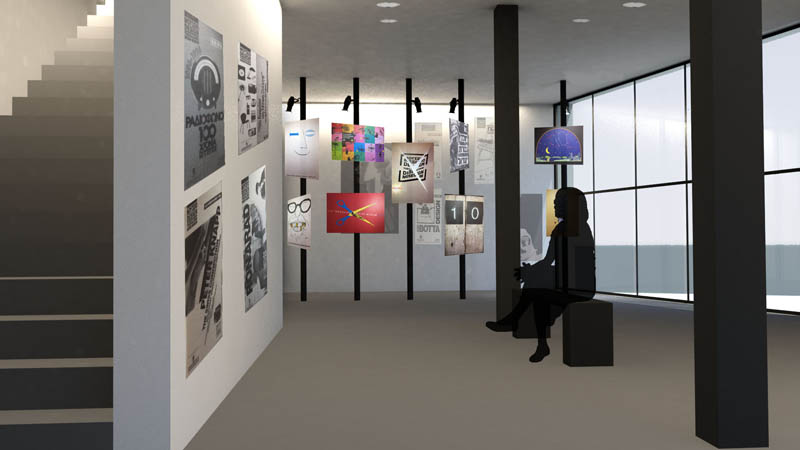

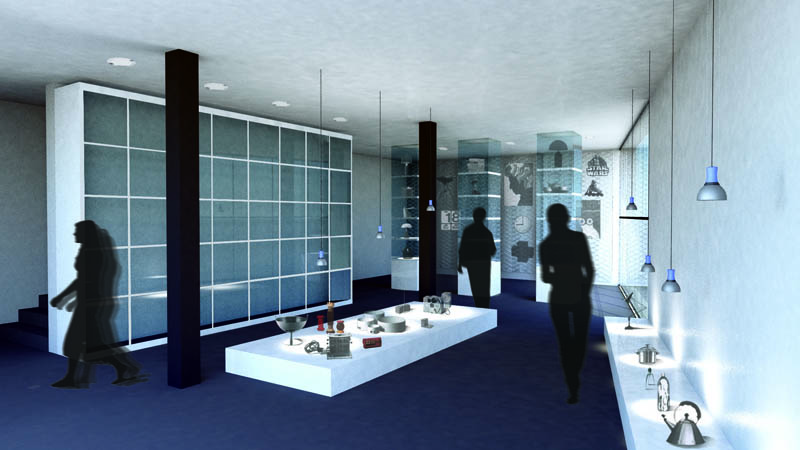

This present bachelor’s thesis concerns the regeneration of an area in the centre of Thessaloniki. Within this frame, the creation of a square and an area of greenery are attempted also the erection of a Museum for Industrial Product Design as well as a building-centre of Creativity.
The site chosen consists of a triangular spaced space which has been used as a parking lot and the entrance to the existing blocks of flats.
This complex idea is implemented in three stages.
Firstly, the upgrading of the area is undertaken with the creation of a square at a central location of the site and the placement of greenery in two large sections. The first one is found in front of the block of flats in Licemahou Kaftatzoglou Road and the second one at the spot where Karamanli Avenue joins with Gr. Lampraki Road.
The second stage concerns the erection of a Museum of Industrial Product Design. This venture is done for the sheltering of an appreciable collection which was brought together on the private initiative of Mr Delialis Stergios, which has remained without shelter for twenty years. The collection today consists of more than 3.000 20th century, representative objects of industrial design. The designing of the museum consists of two basic bulks made of concrete which are united through a section “bridge”, whereas large surfaces are covered by glass.
The final stage of this project is the erection of a centre of creativity at the point of the site where Kaftatzoglou Road is joined with Karamanli Avenue. This building is an annex to the Polytechnic School, however it functions as an auxiliary wing, to the museum. It has been created with the rationale of ramps and gives the impression of two separate buildings which one touches the other. The basic uses of the buildings include exhibition halls, an amphitheatre, workshops and a café restaurant. Our aim is to stimulate the interest of the public in the object of industrial design and to produce areas of creative activities, where university students as well as the general public will participate in.
Supervisors: Triantafillidis Giorgos, Manolidis Kostas
Reference Number: 672

